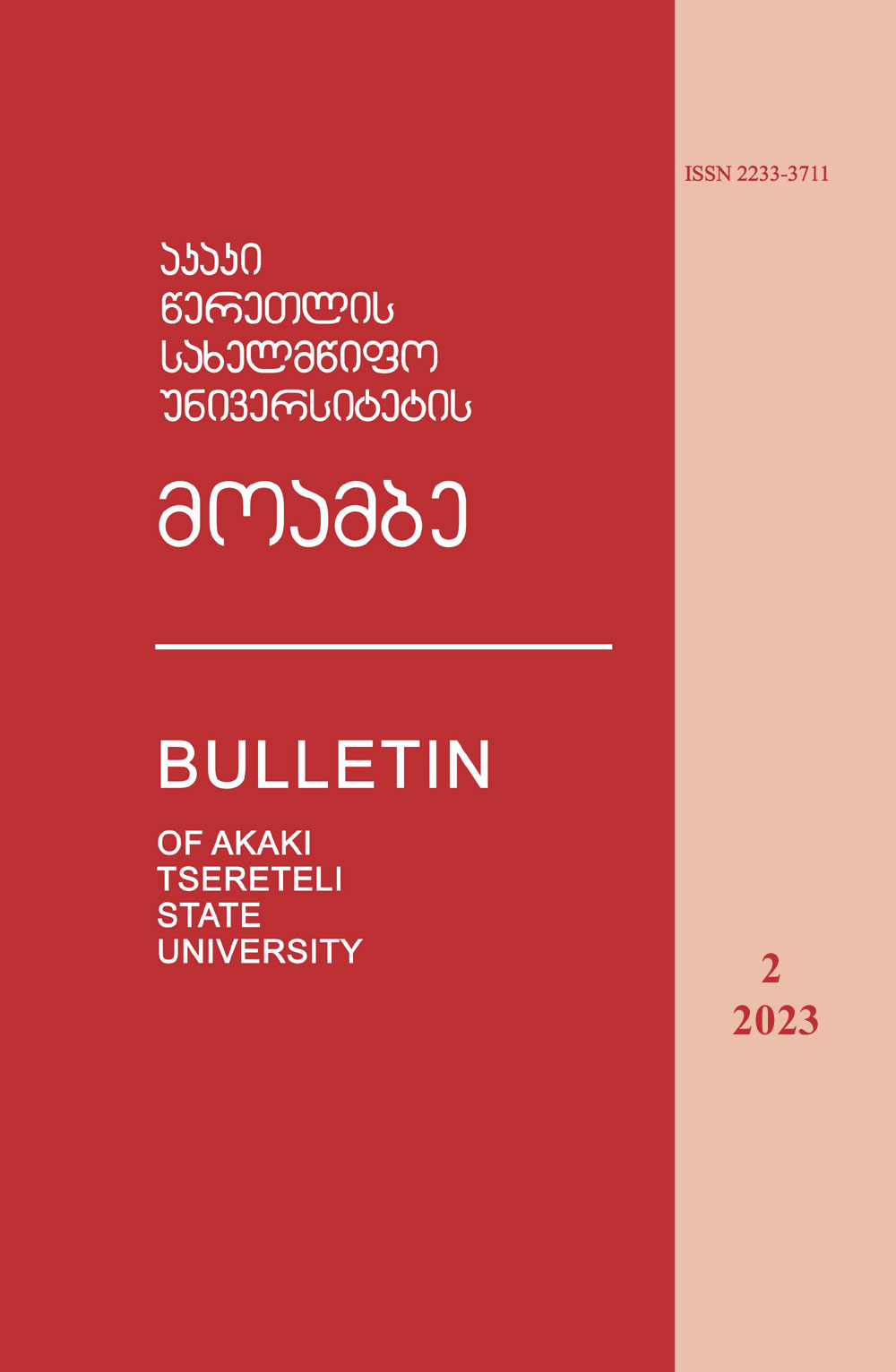Complex esters of carboxylic acids of grape-seed oil of colored grapes “Zeibel 5455” variety belonging to the Vitis labrusca (Fox Grape) family
Keywords:
extracts, carboxylic acids, superfluid extraction, wine, grapes, grape-seed, complex estersAbstract
Extraction of biologically active compounds from plant raw materials has been used since time immemorial in Medea's homeland. The extraction methods and methodology have been improved over time. The superfluid extraction method is among the environmentally safe and modern methods. In the laboratory of the Biology Department of Batumi Shota Rustaveli State University, under the guidance of Professor Aleko Kalandia, we obtained vegetable oil by superfluid extraction from the unfermented seed of colored grapes ”Zeibel 5455” variety belonging to the Vitis labrusca (Fox Grape) family (in the extraction process, methyl alcohol was used as a cosolvent in the range of 20%), and the qualitative and quantitative composition of high-order carboxylic acids and their esters contained therein were investigated. Chromatographic research showed that the oil obtained from the seed of hybrid grapes (Zeibel-5455) contains five dominant carboxylic acids: - Palmitic acid methyl ester (C16:0) 8.407 %, Linoleic acid methyl ester (C18:2n6c) 66.801 %, Oleic acid methyl ester (C18 :1n9c) 19.779%, Elaidic acid methyl ester (C18:1n9t) 0.656%, Stearic acid methyl ester (C18:0) 3.451%. Other carboxylic acids are present in very small quantities in the superfluid extracts of colored grapes seeds that we have chosen for a study. The results of the chromatographic study of the complex esters of carboxylic acids of the grapeseed oil of colored grape “Zeibel 5455” variety belonging to the Vitis labrusca (Fox Grape) family (grown in the viticulture and winemaking microzone of Baghdadi showed that the dominant compound in vegetable oil obtained from the grape stone is linoleic acid, which occupies 66.801% of the total area of fatty acids in the test sample.
References
დურმიშიძე, ს., ხაჩიძე, ო. 1979. ყურძნის ქიმიური შედგენილობა. „მეცნიერება“, თბილისი.
ნავარი, კოლეტ, ფრანსუაზ, ლანგლადი. 2004. ენოლოგია. „დიოგენე“, თბილისი.
ღვინიანიძე, თ. 2023. ღვინო - ტექნოლოგია და ტექნოქიმიური კონტროლი. აწსუ, ქუთაისი.
ჩიქოვანი, პ., კალანდია, ა., ღვინიანიძე თ. 2022. წიპწის თხევადი ბიოფლავანოიდური კონცენტრატები. აკ. წერეთლის სახელმწიფო უნივერსიტეტის მოამბე, N1(19), 2022: 8-17.
Kishkovsky, E.N., Skurikhin, I. M. 1976.Chemistry of Wine. Food industry, Moscow (Ru).
Fatty Acids. Their Chemistry, Properties, Production and Uses. 1960. New York: Interscience, 1960, vol. 1–4.
Material karbonovye kisloty. 2023. მოძიებულია 15.09.2023. ელექტრონული რესურსი: https://rosuchebnik.ru/material/karbonovye-kisloty
Фрейдлин, Г.Н. 1978. Алифатические дикарбоновые кислоты. М., Химия
Тутурин, Н. Н. 1890-1907. Этерификация // Энциклопедический словарь Брокгауза и Ефрона : в 86 т. (82 т. и 4 доп.). СПб., 1890-1907.





